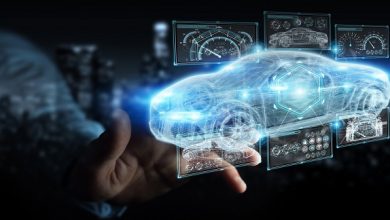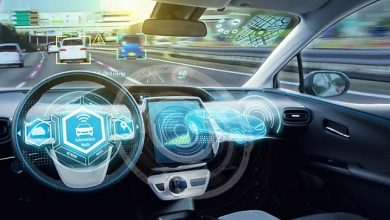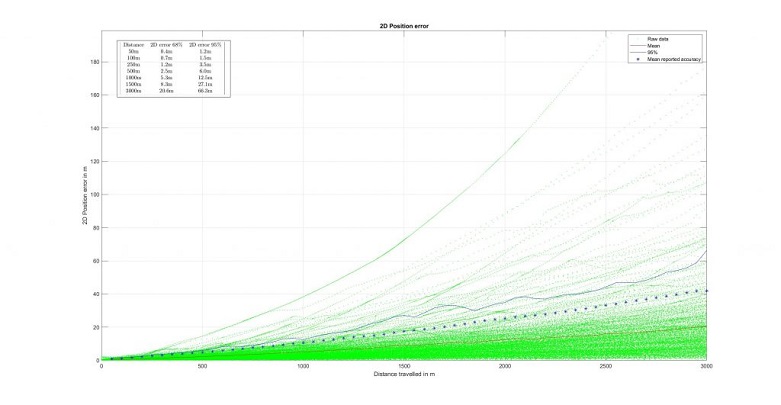Today Vehicles are coming with Eyes and Mouth

What! Do vehicles have eyes and mouth? Are you kidding me?
Don’t be surprised because intelligent transport systems are becoming integral part of today’s vehicles which behaves like human eyes and mouth. These eyes give 360 degree surrounding view inputs to vehicle brains i.e. Electronic Control Units (ECU’s). After decision making in brains, they let you know/guide you by means of voice, alerts and notification via mouth i.e. voice processing and ADAS systems. Vehicle on the road talk to each other via connected features and protect you from accidents and make your driving easy.
Welcome to the world of Intelligent Transport systems and we are in the space of MAN, MACHINE & AI. These systems in vehicles are providing safety, security, comfort and luxury to the owners and his/her family. In India until last year vehicle purchase decisions were MILAGE driven and now it’s based on SSCL (Safety, security, comfort and luxury). Because of increase in SSCL based buying decision one of the major OEM in India who had a sizeable market share has its share coming down significantly in a quick time. OEMs whose vehicles have integrated systems which enable SSCL are selling like a hot cake. Some of the recent vehicle launches and sales have shown the intensity for the need of SSCL. for example
- Mahindra XUV700 got booking of 50,000 units in just couple of days’ open hours booking slots.
- MG Motor Astor got bookings 5000 within minutes.
Intelligent Systems for SSCL
- V2V System: Vehicle to vehicle communication system enables for co-operative driving and safety applications. V2V enables your vehicle to talk to other surrounding vehicles for example in scenarios of unseen road curves, roads junction crossovers and thus protect you from unintended collisions.
- Adaptive Cruise Control System: This enables your vehicle to adopt to the speeds of front vehicles and objects.
- LDW System: Lane departure warning system protect you from unintended lane change during the drive.
- SAS (Speed Assist System): We human eyes might miss out one or two road signs but SAS eyes wont and supports/guide you for speed assistance based on road signs.
- Intelligent Headlight Control system: During night drive IHC system enables you to activate or deactivate the high beam depending on traffic and environment situation.
- FCW System: Forward collision warning system alerts you after watching and sensing that gap between your vehicle and other vehicles & objects is too close. It’s enables you to avoid probable collision
These are the few systems which behave like eyes and mouth of human. There are many more such system available and they are all integrated in Autonomous Driving System. These are also available as discrete systems, and they form an ADAS features list.
Influence on Business Parameters for OEM’s and Its Suppliers
Apart for providing SSCL to vehicle owner’s these above systems plays important hidden role in controlling OPEX items in P&L and balance sheet of OEM’s and Its suppliers. Connected systems will always provide live information about few parts and accessories of vehicles and this enables to maintain optimum level inventory as per the needs across the supply chain. These Connected systems reduces the time and effort by updating the software over the air and carrying out diagnostics via remote. These intelligent systems provide WIN-WIN situations for customers, manufactures and its suppliers. In this way entire transportation eco system gets benefited.
Building blocks of Intelligent Systems
Radar, Camera, LiDAR, IoT enabled sensors and microcontrollers/processors are the main building blocks of intelligent systems in the vehicles. Right now, LiDAR based systems are in less use over the RADAR based systems due to LiDAR few constraints on night-time and changes to environmental situations.
Language and Interaction Medium
How are these intelligent systems talking to passengers in vehicle? Which language machines talks to each other?
When you speak something to voice processing system ex. Alexa Auto it processes your speech and communicates to other intelligent systems in the vehicle to do particular task or if your vehicle moving away from lane unintentionally then Lane departure warning system communicates to Alexa Auto and which intern interacts with you saying, “Hey buddy you are changing lane and do you really want to do so?”. Are you curious to know what interaction medium/language these intelligent systems use to talk to each other? Answer is simple, and it depends on vehicle intelligent systems architecture defined by standards of various OEM’s, Tier-1s alliances.
To keep it simpler these intelligent systems, talk to each other over the CAN, LIN, Ethernet or combination of these communication protocols. If the connected systems are based on WLAN/WiFi they use IEEE 802.11P protocol to communicate each other, If the systems are designed for GeoNetworking then ETSI TS/EN protocol is used. If the systems are designed for WAVE (Wireless access in Vehicular Environment) then WAVE short messages or DSRC communication protocol is used for communication.
Challenges in Validating Connected & ADAS/Autonomous Systems
Reliability and dependency on this system increase based on the quality of the Connected & ADAS/Autonomous intelligent systems. To build quality systems, it requires huge effort to validate or test during the development phase of these intelligent systems. Before these intelligent systems we had seen certain number of test cases would fulfil the 100% test coverage of a particular control system in vehicle but with these intelligent systems are becoming more and more complex in nature, achieving 100% test coverage has become a challenge. For autonomous driving features validation, we have infinite number of test cases and test scenario. How do we overcome from such challenges?
Innovation in ADAS & Autonomous Driving test systems from various organizations like Vector Informatik, NI, IPG, dSPACE, Ansys, Foretellix etc. have helped the validation infrastructure eco system to overcome from such challenges. Validation process and methods plays significant role and also helps to overcome from these challenges.
Author:

Suresh Balu Kamate
Technical Sales & Business Development Manager
Vector Informatik India Pvt Ltd
Suresh has 15+ Yr.’s of experience in Automotive domain working in the global locations (Europe, US, Japan & Vietnam) for major OEM’s & Tier-1’s. He is a recognized voice in Connected Vehicles, ADAS/Autonomous Vehicles, Engine Management & e-mobility. Suresh has expertise in developing the ECU’s from scratch to deploying them into vehicles. He Has studied Sales & Marketing at the IIM-C and M. Tech in Digital Electronics.
Published in Telematics Wire



